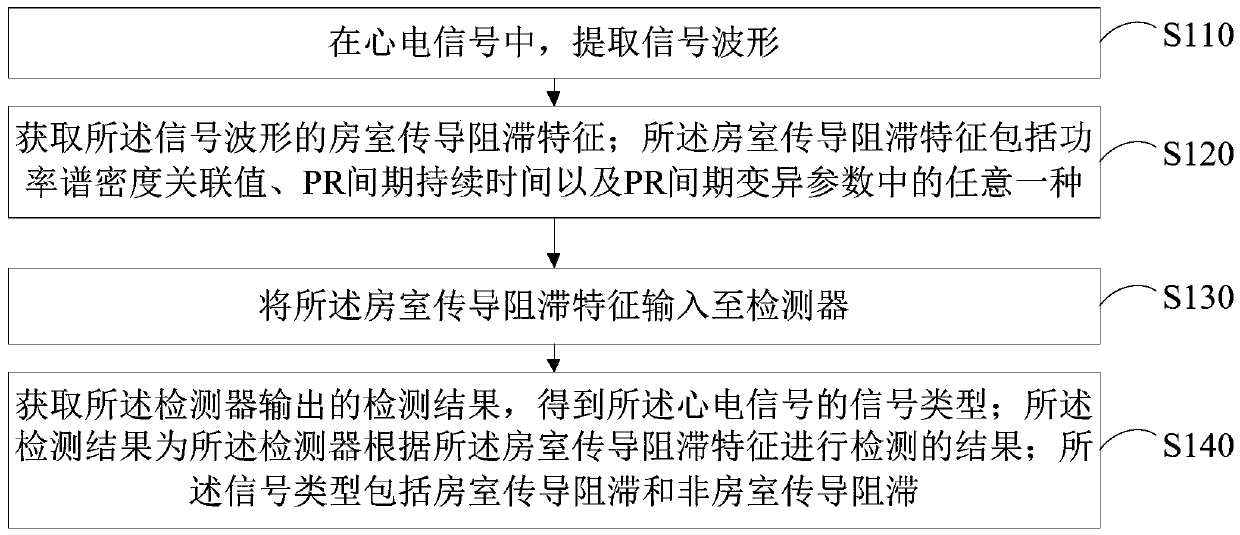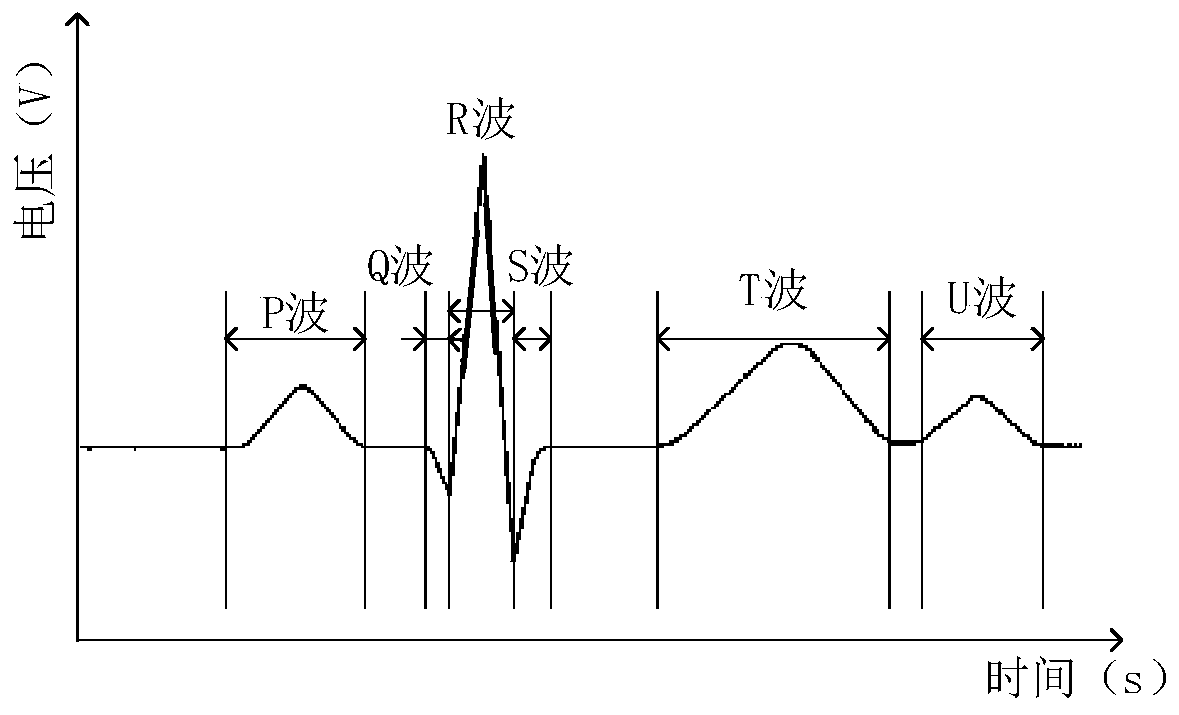Atrioventricular block detection method, apparatus and electronic equipment base on electrocardiograph signals
An atrioventricular block and electrocardiographic signal technology, which is applied in the directions of diagnostic signal processing, sensors, diagnostic recording/measurement, etc., can solve the problem of complex electrocardiogram identification, low detection accuracy, reliability and accuracy that are difficult to meet clinical diagnostic standards And other issues
- Summary
- Abstract
- Description
- Claims
- Application Information
AI Technical Summary
Problems solved by technology
Method used
Image
Examples
Embodiment 1
[0061] figure 1 It is a flowchart of an atrioventricular block detection method based on electrocardiographic signals provided in Embodiment 1 of the present application. The atrioventricular block detection method may specifically include the following steps:
[0062] Step S110, extract the signal waveform from the electrocardiographic signal.
[0063] In a specific implementation, multi-channel synchronous data can be used to collect human heart signals, background noise and electrocardiographic signals. More specifically, firstly, ECG signals can be collected through ECG leads and sensors, and the collected ECG signals can be subjected to impedance matching, filtering, amplification and other processing through analog circuits. Then, the analog signal of the physiological parameters of the human body is converted into a digital signal by an analog-to-digital converter. Then, the filtered ECG signal is obtained through a low-pass filtering technique. Finally, the signal w...
Embodiment 2
[0091] Figure 4 It is a flowchart of a method for detecting atrioventricular block provided in Embodiment 2 of the present application. Specifically, refer to Figure 4 , the atrioventricular block detection method of Example 2 of the present application, specifically comprising:
[0092] Step S210, collecting original electrocardiographic signals, and performing low-pass filtering on the original electrocardiographic signals to obtain high-frequency noise-filtered signals as the electrocardiographic signals.
[0093] In a specific implementation, a low-pass digital filter may be used for low-pass filtering to filter out high-frequency noise (such as above 300 Hz) to obtain the filtered ECG signal. Wherein, the low-pass digital filter may specifically be a Butterworth filter.
[0094] Step S220, extract the signal waveform from the ECG signal.
[0095] In a specific implementation, by performing low-pass filter preprocessing on the original ECG signal, the ECG signal can ...
Embodiment 3
[0203] Figure 5 It is a schematic structural diagram of an atrioventricular block detection device provided in Embodiment 3 of the present application. refer to Figure 5 The atrioventricular block detection device provided in the third embodiment specifically includes: a signal waveform extraction module 510, a block feature acquisition module 520, a block feature input module 530, and a signal type determination module 540, wherein:
[0204] The signal waveform extraction module 510 is used to extract the signal waveform from the ECG signal;
[0205] Block feature acquisition module 520, configured to acquire the atrioventricular block feature of the signal waveform; the atrioventricular block feature includes power spectral density correlation value, PR interval duration and PR interval variation parameters any one;
[0206] A block characteristic input module 530, configured to input the atrioventricular block characteristic to the detector;
[0207] The signal type d...
PUM
 Login to View More
Login to View More Abstract
Description
Claims
Application Information
 Login to View More
Login to View More - R&D
- Intellectual Property
- Life Sciences
- Materials
- Tech Scout
- Unparalleled Data Quality
- Higher Quality Content
- 60% Fewer Hallucinations
Browse by: Latest US Patents, China's latest patents, Technical Efficacy Thesaurus, Application Domain, Technology Topic, Popular Technical Reports.
© 2025 PatSnap. All rights reserved.Legal|Privacy policy|Modern Slavery Act Transparency Statement|Sitemap|About US| Contact US: help@patsnap.com



